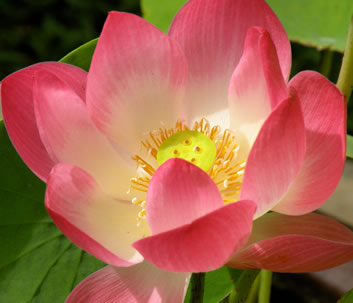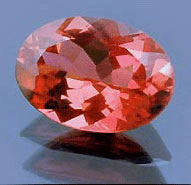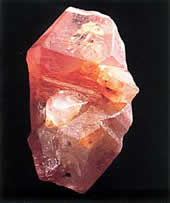Padparadscha Sapphire

Table of Contents
Introduction
Padparadscha sapphires stand out for their rare pink-orange hue, which brings to mind a tropical sunset. These gemstones are highly sought after for their distinctive color and beauty, ranking as the rarest and most valuable sapphire variety.
Origin of the Name
The name padparadscha, as unique as the gem itself, comes from the Sinhalese word for lotus flower. You might think that makes defining the color straightforward—just match it to the lotus. But lotus flowers appear in various shades like red, pink, blue, white, and pale yellow. In Buddhism, the pink lotus holds special significance as the 'supreme lotus' linked to the historical Buddha. So, perhaps we should focus on that pink variety.

If you examine a pink lotus, it's clearly pink with no real orange tones, except maybe in the stamens or seed cup, which lean more yellow. Nature doesn't provide a simple answer here for the padparadscha color.
Defining the Color
Experts don't always agree on the precise shade for padparadscha. Walter Schumann, in his influential book Gemstones of the World, describes it as "pinkish orange." From reviewing gemological sources, the general view is that a true padparadscha sapphire shows both orange and pink with a pastel tone. There's no set rule on whether pink or orange should dominate. We've seen countless photos of supposed padparadscha gems, and many appear purely pink or entirely orange.

Rarity and Value
Genuine untreated padparadscha sapphires are incredibly hard to find, often selling for up to $5,000 per carat because of their scarcity. More common are pink or orange sapphires treated with beryllium to imitate the padparadscha hue. But these treated versions usually have colors that are too vivid or tones that are too dark, missing the natural appeal of an authentic one.
Alternatives
If the padparadscha color captivates you, consider tourmaline as an option—it's often easier to source. Many pink tourmalines carry a subtle orange and yellow mix with that ideal pastel quality to qualify as padparadscha-like.
Frequently Asked Questions
What is a Padparadscha sapphire?
A Padparadscha sapphire is a rare variety of sapphire known for its unique pink-orange color, making it one of the most valuable sapphires.
Where does the name Padparadscha come from?
The name derives from the Sinhalese term for lotus flower, reflecting the gem's distinctive hue.
How is the color of Padparadscha defined?
It's generally agreed to be a pastel mix of pink and orange, though experts debate the exact balance between the two shades.
Are Padparadscha sapphires rare?
Yes, untreated natural ones are extremely scarce, which drives their high value, often up to $5,000 per carat.
How can I tell if a Padparadscha sapphire is treated?
Treated stones, often enhanced with beryllium, tend to have more intense colors or darker tones compared to natural ones, which can be verified through gemological testing.
Is there an alternative gemstone to Padparadscha sapphire?
Tourmaline can offer a similar pink-orange pastel shade and is usually more readily available.

